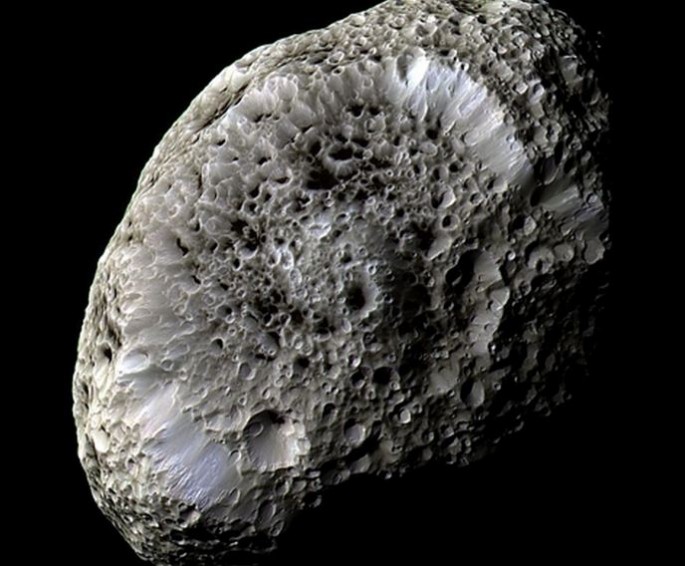An enhanced image of tantalizing Hyperion shows greater detail of this sponge-like moon of Saturn, some 40 percent of which is just empty space and whose solid portion is mostly water ice.
The new and enhanced image was taken by NASA's Cassini spacecraft at a distance of 38,000 miles and processed by the European Space Agency. Cassini took the photo in 2005 but ESA released the composite image only recently after combining images from Cassini's infrared, green and ultraviolet camera filters.
ESA scientists also enhanced the surface features in this composite image for an unprecedented and more detailed look at porous Hyperion, which was the first non-round moon to be discovered. The only other non-round moon in the solar system is Proteus, a moon of Neptune.
Scientists said the sponge-like or extremely jagged shape of Hyperion is largely due to its consisting mostly of dirty water ice with only a small amount of rock. Hyperion, also known as Saturn VII, can be described as a pile of rubble held together by gravity.
Some 40 percent of Hyperion, however, is empty space because of its enormous number of craters. It was suggested in 2007 this porosity allowed the moon's craters to remain nearly unchanged over billions of years.
Hyperion jolted Cassini with a 200 volt electric shock when the spacecraft made its close flyby in 2005. Hyperion is an electrostatically charged moon that collects charged particles from space and the Sun, as well as particles in Saturn's magnetic field, said Tech Times.
"Surface charging as a fundamental phenomenon affecting planetary objects is currently not well understood and while it has been observed on Earth's Moon, the Saturn system presents us with an opportunity to study this effect in an environment where many parameters are completely different," said Geraint Jones of the University College of London.
"Our observations show that this (surface charging) is also an important effect at outer planet moons and that we need to take this into account when studying how these moons interact with their environment."
Hyperion was discovered by William Cranch Bond, George Phillips Bond and William Lassell in 1848. It is distinguished by its irregular shape, its chaotic rotation and its unexplained sponge-like appearance.
A possible explanation for the irregular shape is that Hyperion is a fragment of a larger body that was broken up by a large impact. The largest crater on Hyperion is 121.6 km in diameter and 10.2 km deep.
Hyperion is the Titan god of watchfulness and observation.



























